“At the end of the day, we can endure much more than we think we can”
– Frida Kahlo –
Frida Kahlo’s Early Life: A Childhood Shaped by Illness
Frida Kahlo was born on July 6, 1907, in Coyoacán, Mexico, to a German father, Wilhelm Kahlo, and a Mexican mother, Matilde Calderón. She was the third of four daughters and grew up in a home that blended European and Mexican traditions. Her father was a professional photographer, a German immigrant who moved to Mexico at a young age, while her mother came from a Catholic, mestizo background. Frida’s mixed heritage, as well as her father’s profession, would later influence her work, both in terms of the themes of identity and the vivid colors that became a hallmark of her style.
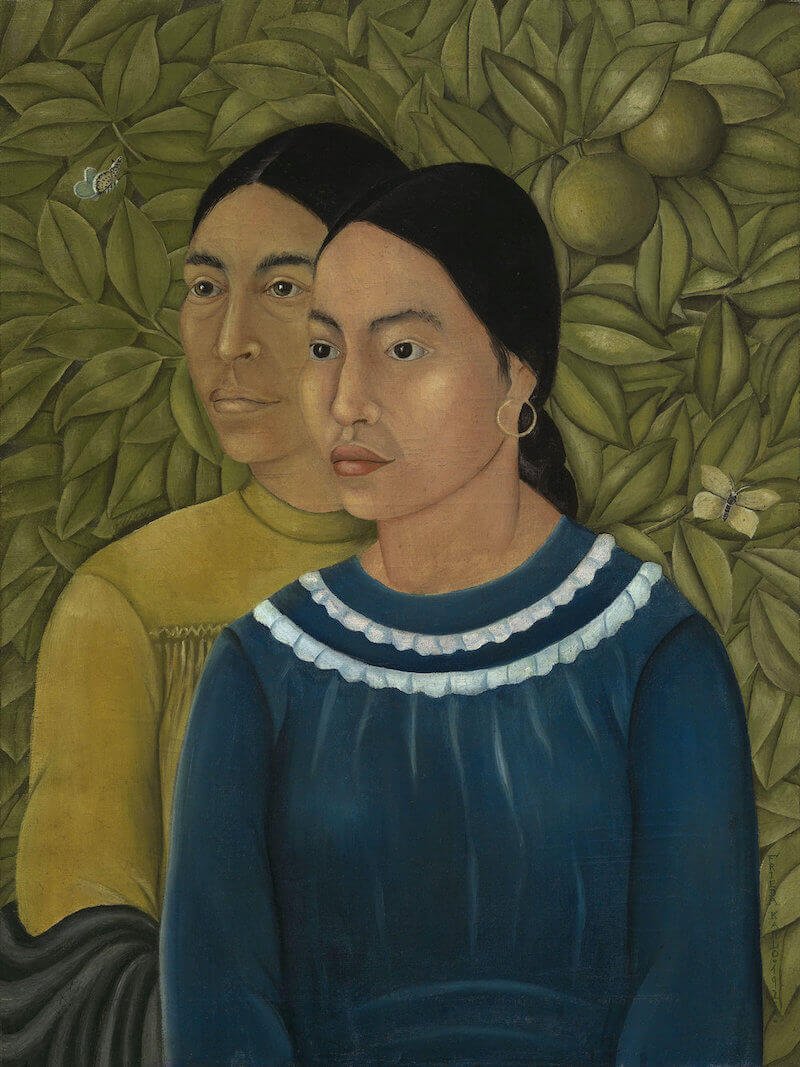
While her early years were filled with the warmth of family and home, Frida’s childhood was also marked by adversity. At the age of six, she contracted polio, a viral disease that causes swelling of the spinal cord and limbs. The disease left Frida with a lasting limp, and her right leg was considerably weaker than her left. She was often ridiculed by her peers and spent much of her childhood in isolation. Despite this, the young Frida developed a sense of independence and determination that would remain central to her character throughout her life. She used to say that “I was born a little girl, but I grew up to be a big woman,” reflecting her resilience in the face of adversity.

Frida’s physical deformity from polio and the bullying she endured had a profound impact on her emotional development. Kahlo was not only physically scarred but also psychologically affected by these early experiences. The emotional trauma she faced as a child would later manifest itself in her art, often expressed through powerful depictions of the body, self-image, and internal struggle. Despite these challenges, Frida began to develop a keen interest in art during her childhood, often drawing and painting. Her early works were influenced by the folk art she saw around her in Mexico, an art form that was both rich in vibrant color and deeply connected to the everyday experiences of ordinary people.
The Bus Accident: A Life-Altering Tragedy
In 1925, when Frida was 18 years old, her life was forever changed. While traveling on a bus in Mexico City with her boyfriend, Alejandro Gómez Arias, the vehicle crashed into a trolley car. The crash was devastating, leaving Frida with multiple severe injuries. She suffered a broken spine, a fractured pelvis, broken ribs, a dislocated shoulder, and numerous fractures in her feet and legs. Her injuries were so extensive that she was bedridden for several months and required over 30 surgeries throughout her life.
The accident, and the subsequent pain and physical challenges it brought, would shape Frida’s life and art in ways that were profound and lasting. The constant pain she endured from her injuries marked the beginning of a relationship with suffering that would dominate her artistic expression. During her months of recovery, Frida began to paint more seriously. She initially painted self-portraits to occupy her time and as a form of emotional catharsis. It was through painting that Frida learned to process the trauma of the accident, the pain of her body, and the alienation she often felt as a result of her physical disabilities.
Frida’s paintings became a way for her to communicate her suffering and to explore the psychological and physical wounds that marked her existence. One of the most famous early works that reflects this period is The Broken Column (1944), a self-portrait in which Frida depicted herself with a cracked column in place of her spine. This image poignantly symbolizes her chronic pain, the brokenness of her body, and her inability to escape from the physical limitations of her injuries. Her self-portraits often displayed her fractured body in brutal honesty, confronting her audience with the rawness of her internal struggles.
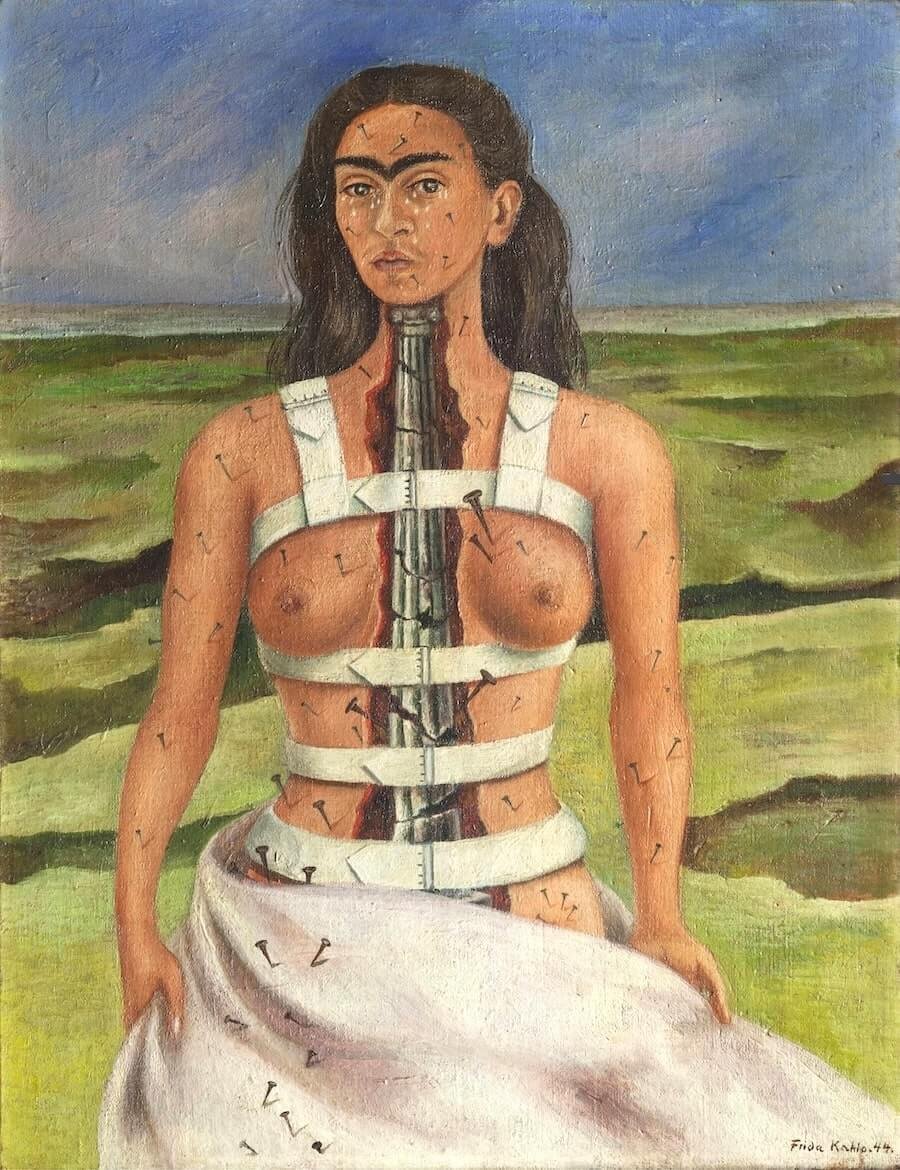
The bus accident also marked the beginning of Frida’s lifelong battle with pain. She would undergo numerous surgeries throughout her life, and her medical history was one of continuous pain and recovery. Frida was often bedridden for extended periods, relying on painkillers and other medications to manage her suffering. Her physical condition was not only a source of pain but also isolation, as her mobility was limited and her body remained a constant reminder of the accident. The inescapable nature of her physical suffering made it impossible for her to escape into a “normal” life, and this sense of confinement permeates her art. She was not only physically confined to a bed but also to a body that did not function as she wished.
Pain as an Artistic Subject: The Birth of Frida’s Unique Style
Frida’s unique artistic style was born out of her intense personal experiences with illness, injury, and the trauma of her body. Despite her physical limitations, Frida continued to paint prolifically throughout her life. She developed a style that was deeply personal, often mixing elements of Mexican folk art with surrealist and modernist influences. She portrayed her body in ways that were both surreal and intensely symbolic, depicting herself in relation to both the external world and her internal emotions.
Kahlo’s work became a mirror of her soul, reflecting the psychological and emotional pain she endured throughout her life. Her pain became her medium, and it was through her art that she made sense of her body, her identity, and her relationship to the world around her. The constant presence of pain in her life made her art increasingly complex, reflecting not just physical suffering but also existential anguish.
Her works are marked by their use of vivid, contrasting colors, often drawn from Mexican folk art. Yet, rather than simply being decorative, these colors serve as a means of conveying emotion. Frida used bold reds, greens, and yellows to express the passion, agony, and hope she experienced in her daily life. She incorporated symbols from Mexican mythology, Catholicism, and her own experience of physical pain into her paintings. For example, her depiction of herself with a third eye or with thorns around her neck mirrored her spiritual and emotional wounds. These symbolic elements became a way for Frida to explore the suffering she endured on multiple levels—physical, emotional, and psychological.
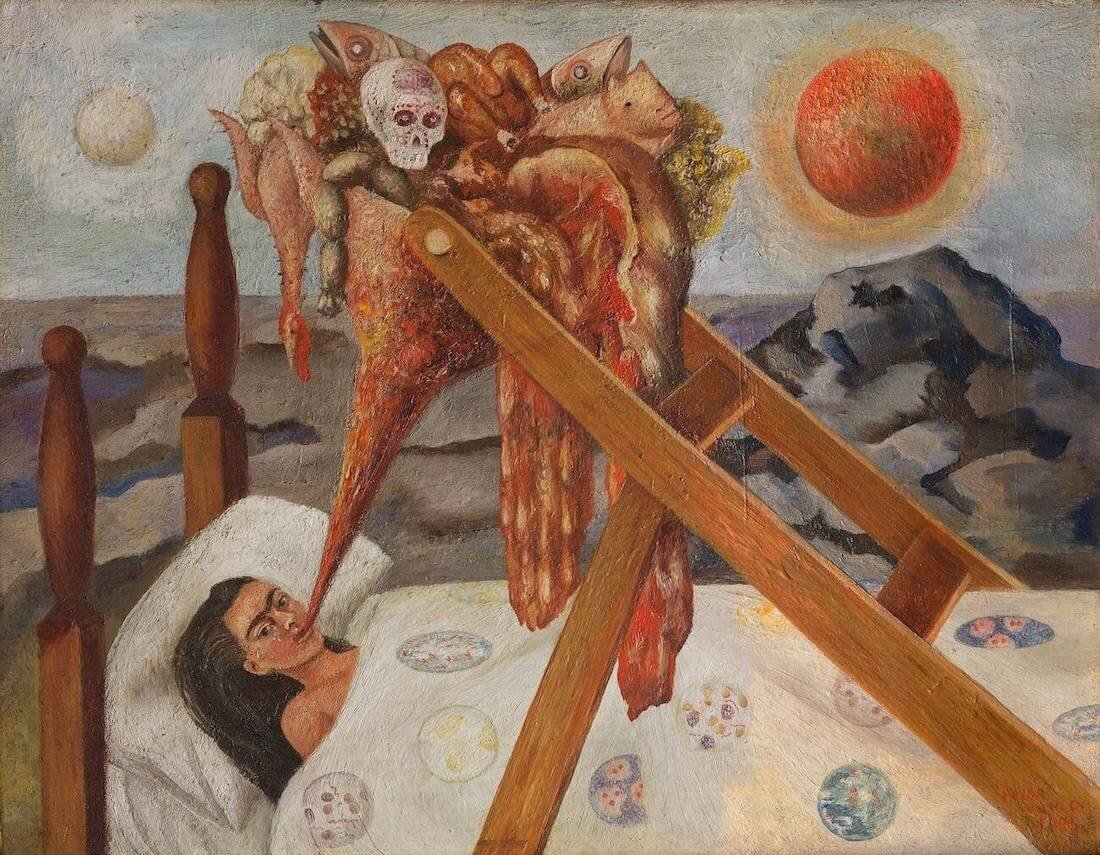
Kahlo’s works often included depictions of broken or damaged bodies, symbolic animals such as monkeys, and surrealist dreamlike landscapes. Her self-portraits, such as Self-Portrait with Cropped Hair (1940), were painted in the aftermath of emotional suffering, reflecting the fractured nature of her identity and her desire for control over her own image. In this famous painting, Frida cuts off her hair and wears a suit, a powerful statement of defiance against societal expectations of women’s appearance and an exploration of gender and identity.
Another poignant example of Frida’s relationship with pain is The Two Fridas (1939), a large-scale painting created during her divorce from Diego Rivera. In this piece, Kahlo depicts herself as two distinct figures, one wearing a European-style white dress and the other in traditional Mexican clothing. The two Fridas are connected by an exposed heart, which is broken and bleeding. This painting illustrates Frida’s internal conflict between her dual identities and her heartbreak over her tumultuous relationship with Rivera. It also shows the vulnerability of the human heart, both emotionally and physically, revealing Frida’s ongoing struggle with her sense of self and her deep emotional pain.
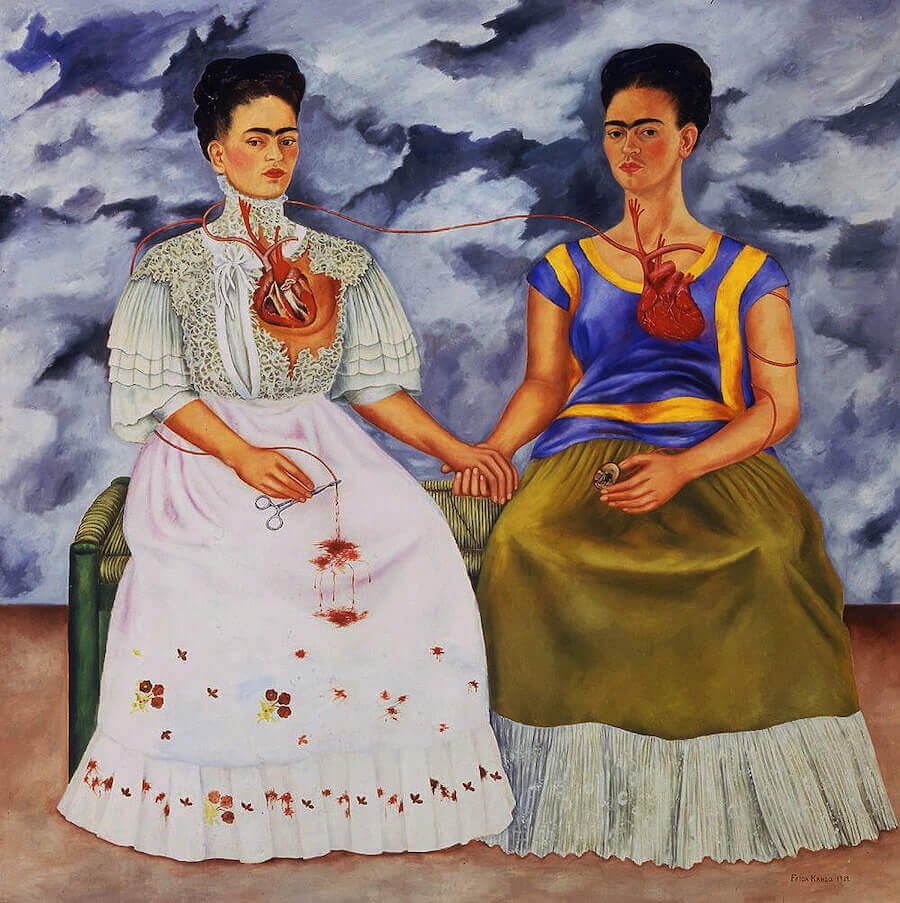
Pain and Emotional Turmoil in Frida’s Personal Life
While Frida’s physical pain was immense, it was often compounded by the emotional and psychological torment she experienced throughout her life. Her relationship with Diego Rivera was particularly tumultuous. Rivera was a famous Mexican muralist and the couple’s passionate and often turbulent marriage was fraught with infidelities, emotional abuse, and separations. The instability in their relationship profoundly impacted Frida’s work, and much of her art reflects the intense emotional turmoil she faced as a result.
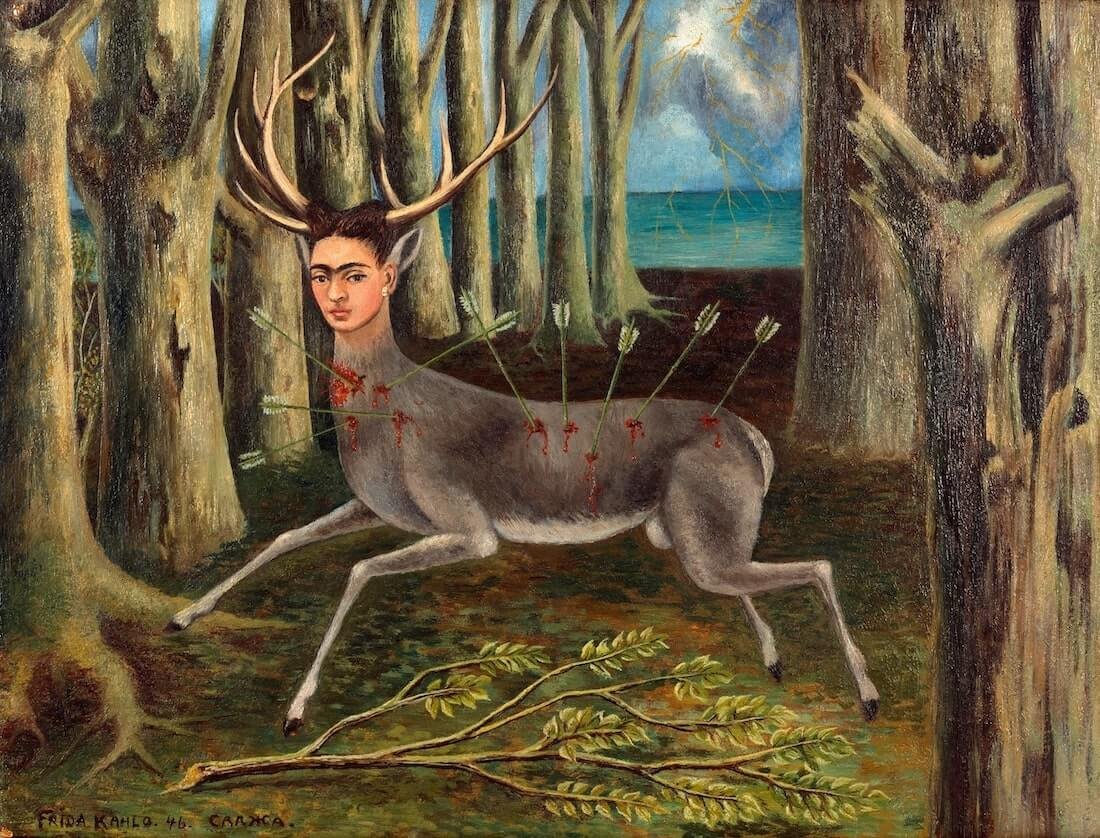
Frida’s emotional pain was not only linked to her relationship with Rivera but also to her own struggles with identity and belonging. Throughout her life, Frida grappled with the tension between her Mexican heritage and her European roots, as well as her gender identity. She often portrayed herself in traditional Mexican clothing, but her art also reflected her internal struggles with her appearance, her sexuality, and her body. Her battles with infertility, numerous surgeries, and her emotional scars were all channeled into her art, making her works deeply intimate and universally resonant.
Legacy of Frida Kahlo’s Art: Transforming Pain into Power
Frida Kahlo’s life and art are a profound testament to the power of transformation through suffering. The pain she endured, both physical and emotional, was not something she could escape, but rather something she channeled into her artwork. Each stroke of her brush became an act of defiance, a way to reclaim control over her narrative and her body, which had been subjected to years of injury, illness, and heartbreak. By confronting the rawness of her own experience—her fractured body, her emotional turmoil, her struggles with identity—Frida created art that was deeply personal yet universally relatable. Her work transcended the boundaries of self-expression, making it a powerful commentary on pain, resilience, and the human condition. Through her paintings, Frida Kahlo gave voice to those who also carry invisible burdens, showing that art can not only reflect suffering but also transform it into something powerful, beautiful, and enduring. In doing so, Frida Kahlo continues to inspire generations of artists, women, and individuals, proving that even the most profound pain can lead to the creation of something lasting and meaningful.

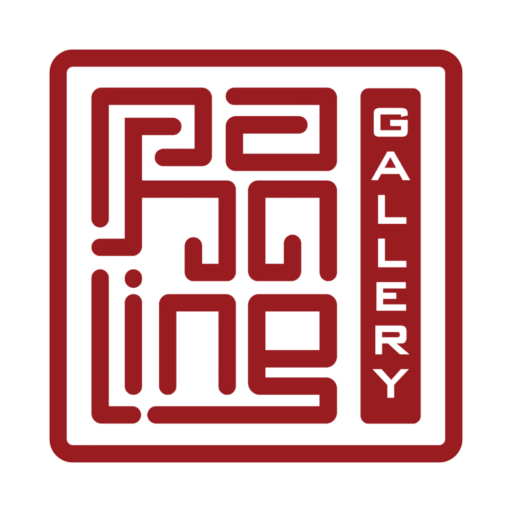
There’s something mesmerizing in the way you bring clarity to complex concepts, making them feel like second nature.
Thank you for your lovely comment.
Reading your piece felt like walking through a lush garden of ideas, each one blooming with vibrant insights that invited both contemplation and joy. Your words move with such effortless grace, and the way you bring together seemingly disparate thoughts into a cohesive whole is nothing short of magical. It’s a rare gift to make complex ideas feel so accessible, yet so profound.
The text carries quiet elegance, where each phrase contributes to reflective flow and rhythm. The reader is guided gently through ideas, emotion, and nuance.